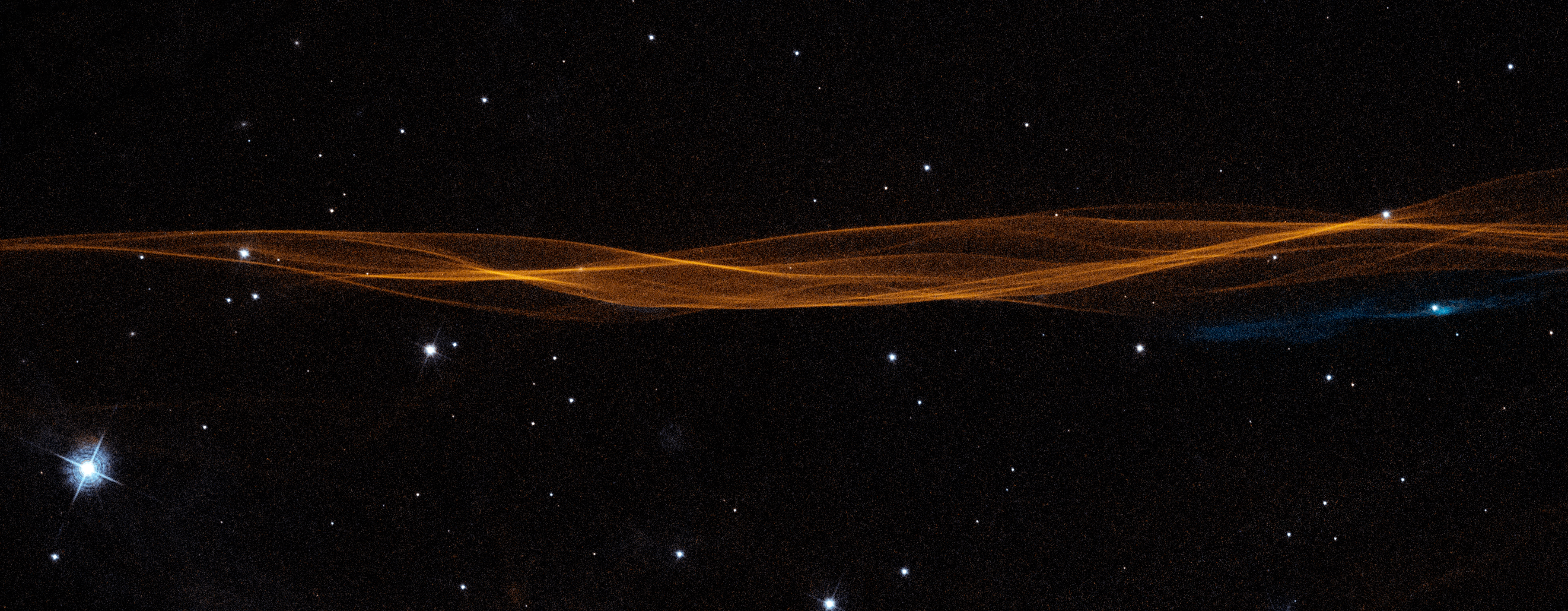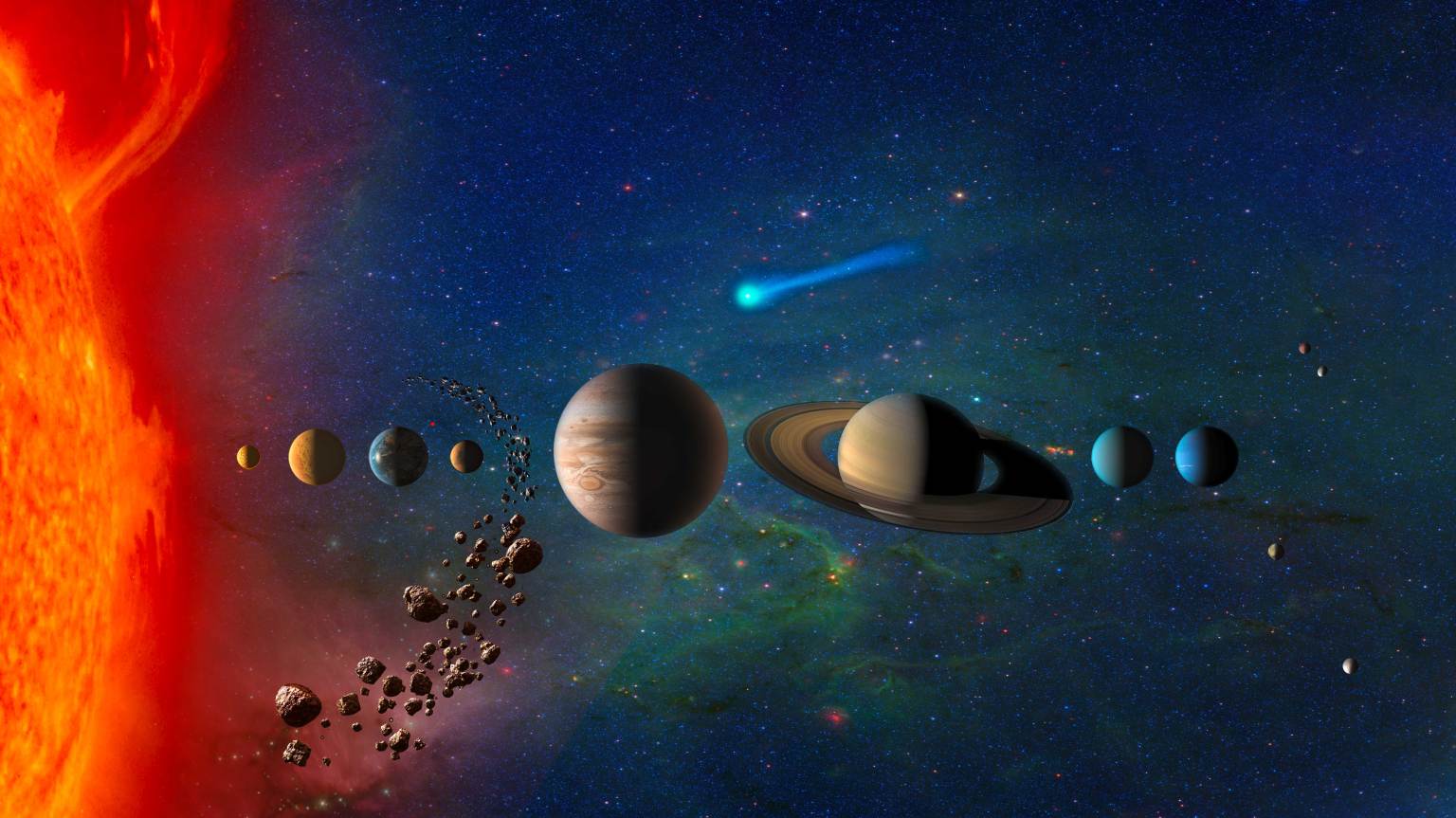4 min read
Living on the Edge: Supernova Bubble Expands in New Hubble Time-Lapse Movie

Though a doomed star exploded some 20,000 years ago, its tattered remnants continue racing into space at breakneck speeds – and NASA’s Hubble Space Telescope has caught the action.
The nebula, called the Cygnus Loop, forms a bubble-like shape that is about 120 light-years in diameter. The distance to its center is approximately 2,600 light-years. The entire nebula has a width of six full Moons as seen on the sky.
Astronomers used Hubble to zoom into a very small slice of the leading edge of this expanding supernova bubble, where the supernova blast wave plows into surrounding material in space. Hubble images taken from 2001 to 2020 clearly demonstrate how the remnant’s shock front has expanded over time, and they used the crisp images to clock its speed.
By analyzing the shock’s location, astronomers found that the shock hasn’t slowed down at all in the last 20 years, and is speeding into interstellar space at over half a million miles per hour – fast enough to travel from Earth to the Moon in less than half an hour. While this seems incredibly fast, it’s actually on the slow end for the speed of a supernova shock wave. Researchers were able to assemble a “movie” from Hubble images for a close-up look at how the tattered star is slamming into interstellar space.
“Hubble is the only way that we can actually watch what’s happening at the edge of the bubble with such clarity,” said Ravi Sankrit, an astronomer at the Space Telescope Science Institute in Baltimore, Maryland. “The Hubble images are spectacular when you look at them in detail. They’re telling us about the density differences encountered by the supernova shocks as they propagate through space, and the turbulence in the regions behind these shocks.”
A very close-up look at a nearly two-light-year-long section of the filaments of glowing hydrogen and ionized oxygen shows that they look like a wrinkled sheet seen from the side. “You’re seeing ripples in the sheet that is being seen edge-on, so it looks like twisted ribbons of light,” said William Blair of the Johns Hopkins University, Baltimore, Maryland. “Those wiggles arise as the shock wave encounters more or less dense material in the interstellar medium.” The time-lapse movie over nearly two decades shows the filaments moving against the background stars but keeping their shape.
NSF’s NOIRLab, Akira Fujii , Jeff Hester , Davide De Martin , Travis A. Rector , Ravi Sankrit (STScI), DSS
“When we pointed Hubble at the Cygnus Loop we knew that this was the leading edge of a shock front, which we wanted to study. When we got the initial picture and saw this incredible, delicate ribbon of light, well, that was a bonus. We didn’t know it was going to resolve that kind of structure,” said Blair.
Blair explained that the shock is moving outward from the explosion site and then it starts to encounter the interstellar medium, the tenuous regions of gas and dust in interstellar space. This is a very transitory phase in the expansion of the supernova bubble where invisible neutral hydrogen is heated to one million degrees Fahrenheit or more by the shock wave’s passage. The gas then begins to glow as electrons are excited to higher energy states and emit photons as they cascade back to low energy states. Further behind the shock front, ionized oxygen atoms begin to cool, emitting a characteristic glow shown in blue.
The Cygnus Loop was discovered in 1784 by William Herschel, using a simple 18-inch reflecting telescope. He could have never imagined that a little over two centuries later we’d have a telescope powerful enough to zoom in on a very tiny slice of the nebula for this spectacular view.
The Hubble Space Telescope is a project of international cooperation between NASA and ESA. NASA’s Goddard Space Flight Center in Greenbelt, Maryland, manages the telescope. The Space Telescope Science Institute (STScI) in Baltimore, Maryland, conducts Hubble science operations. STScI is operated for NASA by the Association of Universities for Research in Astronomy, in Washington, D.C.
NSF’s NOIRLab, Akira Fujii , Jeff Hester , Davide De Martin , Travis A. Rector , Ravi Sankrit (STScI), DSS
Share
Details
Related Terms
Click here for original story, Living on the Edge: Supernova Bubble Expands in New Hubble Time-Lapse Movie
Source: NASA Ames Research Center
